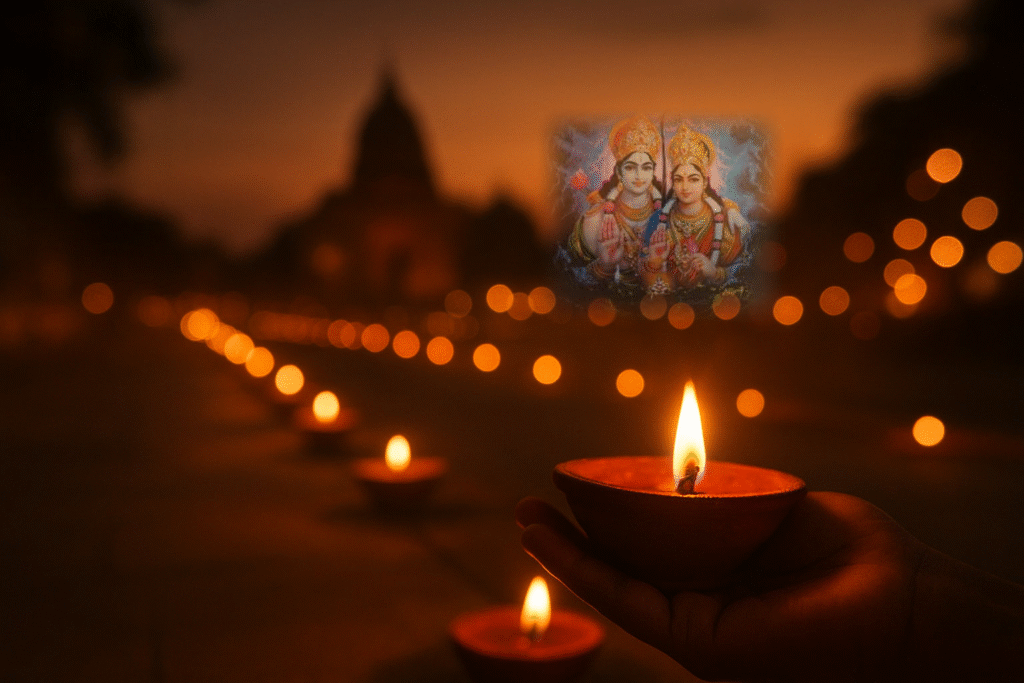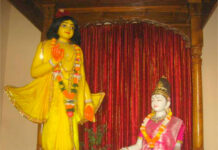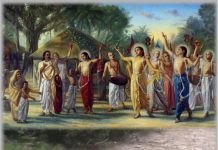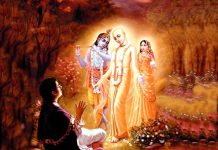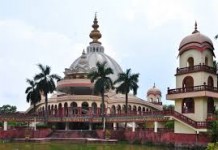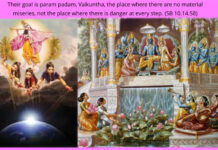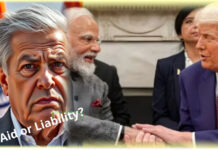Like every Diwali, this year also homes glowed with countless lamps, streets sparkled with decorations, and the air hummed with celebration. Families and friends were greeted warmly, sweets enjoyed, and in some parts of Bharat, the new year was welcomed. It’s all over now, but when the lights of Diwali fade, what truly remains is not the glittering lamps or the sweets on our plates, but a deeper reality that has endured for millennia, the reality that, forever, has ignited devotion in human hearts. While lamps illuminate our surroundings, devotion to the Supreme Lord dispels the darkness of illusion and enlightens our consciousness.
Is Diwali only a “Festival of Lights”?
Diwali is often called the “festival of lights,” and it has relevance, as lamps, whether oil lamps, electric bulbs, or even laser and drone shows, along with fireworks, are an integral part of the celebration. They are expressions of joy, hope, and the human desire to bring brightness into our lives. However, there is more to Diwali than lights alone. Lights and fireworks are integral part of Diwali; not its core. At the core lies a historical and spiritual reality: the return of Lord Ram after years of His exile pastimes. Recognizing this gives Diwali its timeless significance. Celebrating the festival without acknowledging this truth is like admiring the glow of a lamp while overlooking the light it seeks to reveal.
Calling Diwali a festival of lights sounds nice, but it is not complete. In truth, lights are only a part of the actual festival; the festival of joyously welcoming Lord Ram Chandra, along with His entourage, back to Ayodhya. The graceful people of Ayodhya, their hearts overflowing with loving devotion after fourteen full years of separation from their beloved Ram, give us a glimpse of the unforgettable past. Every action of theirs was a display of spontaneous love, free from any tinge of selfishness. Their happiness knew no bounds, nor did the Lord limit showering His merciful glances upon His devotees.
In the midst of joy, it is easy to forget those who live in shadow. They are the visibly suffering and those who, caught in deep illusion, believe they are doing well but fail to see the lurking snake of time, which can change life in a matter of minutes and leave even the happiest in misery. As insightfully pointed out in my earlier article, Diwali is an opportunity to remember them, not just symbolically but practically.
True Diwali celebration is complimented by extending help and offering meaningful wishes that endure; not mere unrealistic hopes that fade in the light of life’s reality. This will preserve the light of Diwali long after the lamps are extinguished and the crackers have gone silent.
As the lights of Diwali fade, let our consciousness illuminate our every thought, every word, and every action. May the light that glowed in the eyes and hearts of the Ayodhya-vasis upon reuniting with their Ram guide us in our own lives.
A Thought on Crackers
Firecrackers have long been a subject of debate, often more as political propaganda than a scientifically grounded concern. While worries about pollution are not unfounded, there are far larger environmental challenges that pose real threats yet are frequently ignored or even promoted: industrial emissions, deforestation, wars, drilling, massive construction projects, high-risk dams over rivers, and global waste, to name just a few. These affect our planet far more than the occasional festival crackers. Bursting crackers may cause a small, temporary rise in air pollution, but it is negligible compared to the lasting impacts of the activities mentioned above. Mindfulness and moderation are important, but making a major issue out of firecrackers every Diwali is truly uncalled for.
Jay Sri Sri Sita Ram Lakshman Hanuman!
